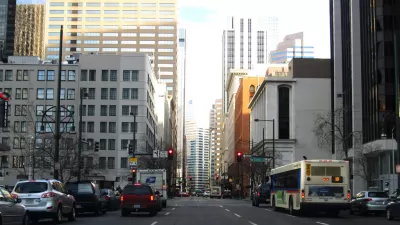Viral pandemics can devastate cities. In this review of pandemics of the past and present, this piece from Places suggests that urban design can play a much more important role in public health and pandemic prevention.
Write Thomas Fisher asks what it means to design cities with viruses in mind, and suggests that we think about viruses and pandemics in cities the same way we think about viruses in our computers.
"A computer virus can cripple hardware and subvert software, preventing us from working or communicating. To avoid this, we have at least three options. First, we can go to the source of the virus and try to stop its spread; second, we can erect digital firewalls and install virus-detection software to halt its arrival; and third, we can try to prevent infection by distancing ourselves from it and not opening attachments. While such efforts rarely ensure complete protection, they do reduce the likelihood of a virus crippling your computer. And they suggest techniques for how we might design our cities to respond to viral diseases let loose around the globe."
"...Approaching architecture and urban design with pandemics in mind will make our cities healthier and more sustainable. Moving bits rather than bodies, increasing the mix of uses in local communities, and reducing the degree of contact we have in the physical environment - all this will not only increase our chances of surviving a pandemic, but also decrease our ecological footprint."
FULL STORY: Viral Cities

Study: Maui’s Plan to Convert Vacation Rentals to Long-Term Housing Could Cause Nearly $1 Billion Economic Loss
The plan would reduce visitor accommodation by 25,% resulting in 1,900 jobs lost.

North Texas Transit Leaders Tout Benefits of TOD for Growing Region
At a summit focused on transit-oriented development, policymakers discussed how North Texas’ expanded light rail system can serve as a tool for economic growth.

Why Should We Subsidize Public Transportation?
Many public transit agencies face financial stress due to rising costs, declining fare revenue, and declining subsidies. Transit advocates must provide a strong business case for increasing public transit funding.

How to Make US Trains Faster
Changes to boarding platforms and a switch to electric trains could improve U.S. passenger rail service without the added cost of high-speed rail.

Columbia’s Revitalized ‘Loop’ Is a Hub for Local Entrepreneurs
A focus on small businesses is helping a commercial corridor in Columbia, Missouri thrive.

Invasive Insect Threatens Minnesota’s Ash Forests
The Emerald Ash Borer is a rapidly spreading invasive pest threatening Minnesota’s ash trees, and homeowners are encouraged to plant diverse replacement species, avoid moving ash firewood, and monitor for signs of infestation.
Urban Design for Planners 1: Software Tools
This six-course series explores essential urban design concepts using open source software and equips planners with the tools they need to participate fully in the urban design process.
Planning for Universal Design
Learn the tools for implementing Universal Design in planning regulations.
City of Santa Clarita
Ascent Environmental
Institute for Housing and Urban Development Studies (IHS)
City of Grandview
Harvard GSD Executive Education
Toledo-Lucas County Plan Commissions
Salt Lake City
NYU Wagner Graduate School of Public Service





























